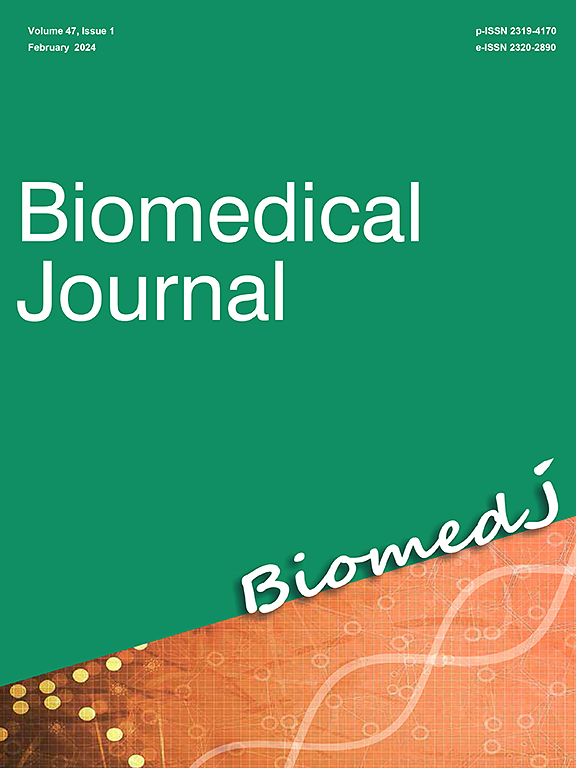Sleep deprivation affects pain sensitivity by increasing oxidative stress and apoptosis in the medial prefrontal cortex of rats via the HDAC2-NRF2 pathway
IF 4.4
3区 医学
Q2 BIOCHEMISTRY & MOLECULAR BIOLOGY
引用次数: 0
Abstract
Sleep is crucial for sustaining normal physiological functions, and sleep deprivation has been associated with increased pain sensitivity. The histone deacetylases (HDACs) are known to significantly regulate in regulating neuropathic pain, but their involvement in nociceptive hypersensitivity during sleep deprivation is still not fully understood. Utilizing a modified multi-platform water environment technique to establish a sleep deprivation model. We measured the expression levels of HDAC1/2 in the medial prefrontal cortex (mPFC) through immunoblotting and real-time quantitative PCR. The presence of pyroptosis was determined using a TUNEL assay. Suberoylanilide hydroxamic acid (SAHA), an HDAC inhibitor employed clinically, was injected into the peritoneal cavity to inhibit HDAC2 expression. Animal pain behaviors were evaluated by measuring paw withdrawal thresholds (PWTs) and paw withdrawal latencies (PWLs). Our findings indicate that sleep deprivation leads to increased nociceptive hypersensitivity, an upregulation of HDAC2 expression in the mPFC, a downregulation of the expression of nuclear factor erythroid 2-related factor 2 (NRF2), and changes in markers of oxidative stress in rats. SAHA, the HDAC inhibitor, enhanced NRF2 expression by inhibiting HDAC2, which consequently ameliorated oxidative stress and mitigated nociceptive hypersensitivity in rats. The incidence of apoptosis was found to be higher in the mPFC tissues of sleep deprivation rats, and the intraperitoneal administration of SAHA decreased this apoptosis. The co-injection of SAHA and the NRF2 inhibitor ML385 into sleep deprivation rats negated the beneficial effects of SAHA. In conclusion, HDAC2 is implicated in the induction of oxidative stress and apoptosis by suppressing NRF2 levels, thereby exacerbating nociceptive hypersensitivity in sleep deprivation rats.
睡眠剥夺通过HDAC2-NRF2通路增加大鼠前额叶内侧皮层氧化应激和细胞凋亡,从而影响痛觉敏感性。
睡眠对于维持正常的生理功能至关重要,睡眠不足与疼痛敏感性增加有关。众所周知,组蛋白去乙酰化酶(hdac)在调节神经性疼痛中起着重要的调节作用,但它们在睡眠剥夺过程中与伤害性超敏反应的关系尚不完全清楚。利用改进的多平台水环境技术建立睡眠剥夺模型。我们通过免疫印迹和实时定量PCR检测HDAC1/2在内侧前额叶皮层(mPFC)中的表达水平。使用TUNEL试验确定焦亡的存在。腹腔注射临床常用的HDAC抑制剂Suberoylanilide hydroxamic acid (SAHA),抑制HDAC2的表达。动物疼痛行为通过测量足退缩阈值(PWTs)和足退缩潜伏期(PWLs)进行评估。我们的研究结果表明,睡眠剥夺导致大鼠伤害性超敏反应增加,mPFC中HDAC2表达上调,核因子红细胞2相关因子2 (NRF2)表达下调,以及氧化应激标志物的变化。HDAC抑制剂SAHA通过抑制HDAC2来增强NRF2的表达,从而改善氧化应激,减轻大鼠的伤害性超敏反应。睡眠剥夺大鼠mPFC组织中细胞凋亡发生率较高,腹腔注射SAHA可减少细胞凋亡。睡眠剥夺大鼠同时注射SAHA和NRF2抑制剂ML385后,SAHA的有益作用消失。综上所述,HDAC2通过抑制NRF2水平诱导氧化应激和细胞凋亡,从而加剧睡眠剥夺大鼠的伤害性超敏反应。
本文章由计算机程序翻译,如有差异,请以英文原文为准。
求助全文
约1分钟内获得全文
求助全文
来源期刊

Biomedical Journal
Medicine-General Medicine
CiteScore
11.60
自引率
1.80%
发文量
128
审稿时长
42 days
期刊介绍:
Biomedical Journal publishes 6 peer-reviewed issues per year in all fields of clinical and biomedical sciences for an internationally diverse authorship. Unlike most open access journals, which are free to readers but not authors, Biomedical Journal does not charge for subscription, submission, processing or publication of manuscripts, nor for color reproduction of photographs.
Clinical studies, accounts of clinical trials, biomarker studies, and characterization of human pathogens are within the scope of the journal, as well as basic studies in model species such as Escherichia coli, Caenorhabditis elegans, Drosophila melanogaster, and Mus musculus revealing the function of molecules, cells, and tissues relevant for human health. However, articles on other species can be published if they contribute to our understanding of basic mechanisms of biology.
A highly-cited international editorial board assures timely publication of manuscripts. Reviews on recent progress in biomedical sciences are commissioned by the editors.
 求助内容:
求助内容: 应助结果提醒方式:
应助结果提醒方式:


